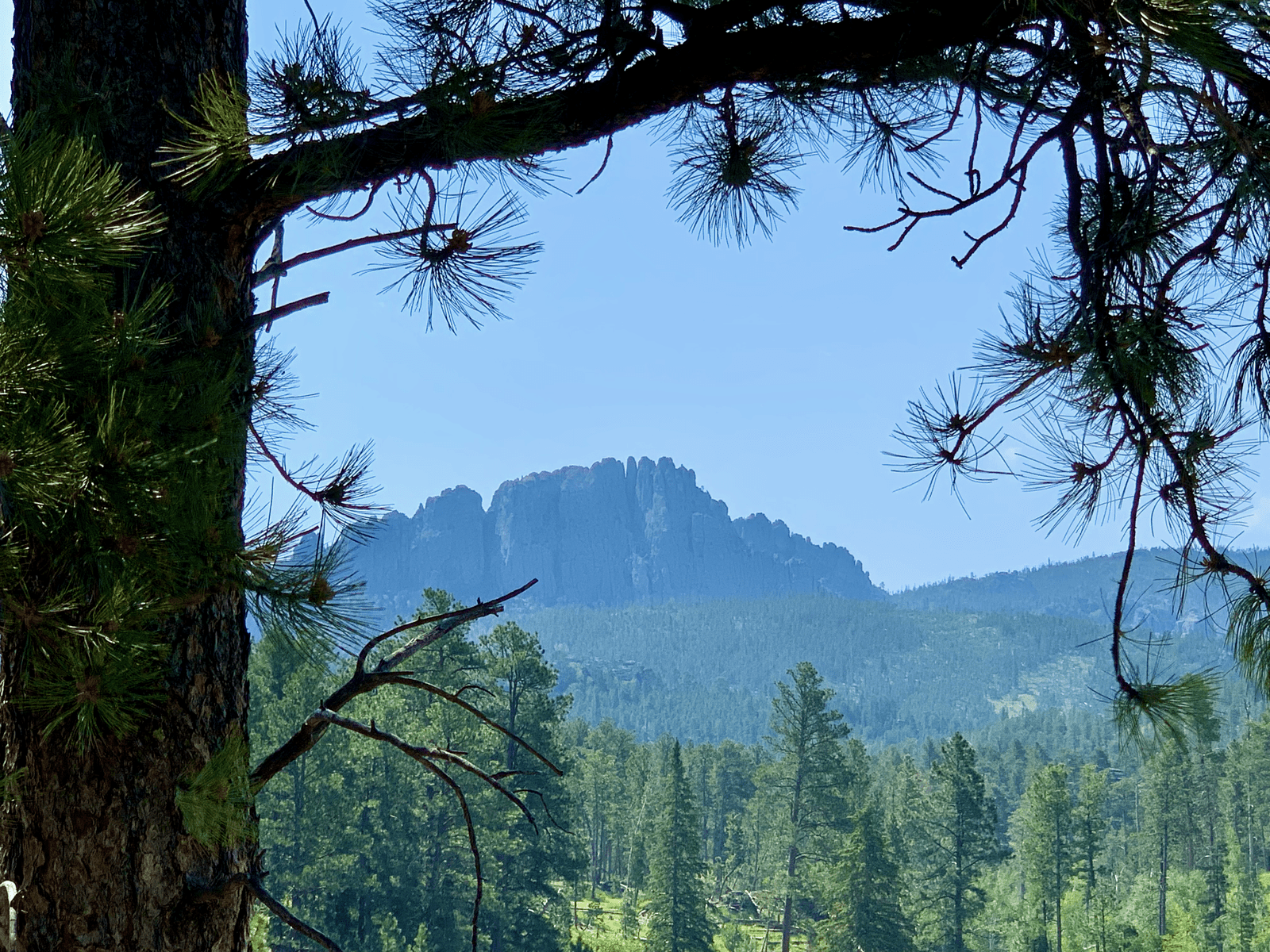The National Parks of the charming Upper Midwest region are where you’ll find living legends, sacred rocks, and mysterious caves. On our family adventure to catch some magic in the National Parks we also unpacked lots of First Nation People history and legend. This was an easy feat, as this region is rich with the sacred.
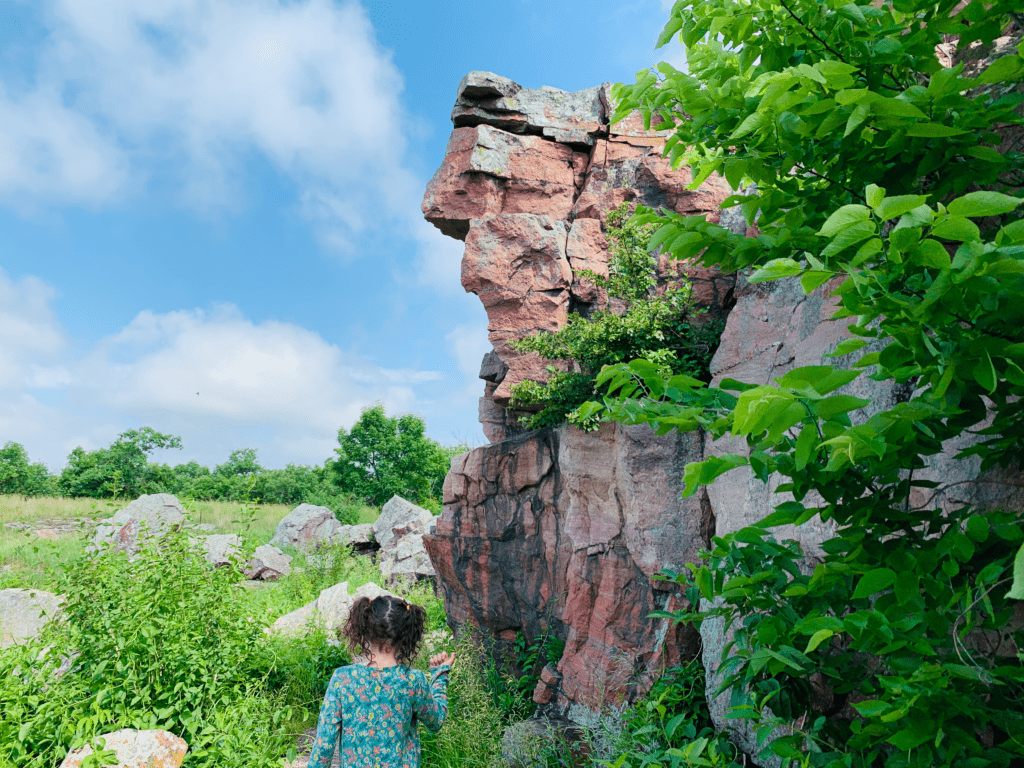
What Brought us to the Upper Midwest
We took a long pause in Minnesota to visit family, and we will be back in the future to complete the rest of the Great Lakes region National Parks. But for now, here’s what we think is the very best of the Upper Midwest National Parks.
Wind Cave National Park in South Dakota
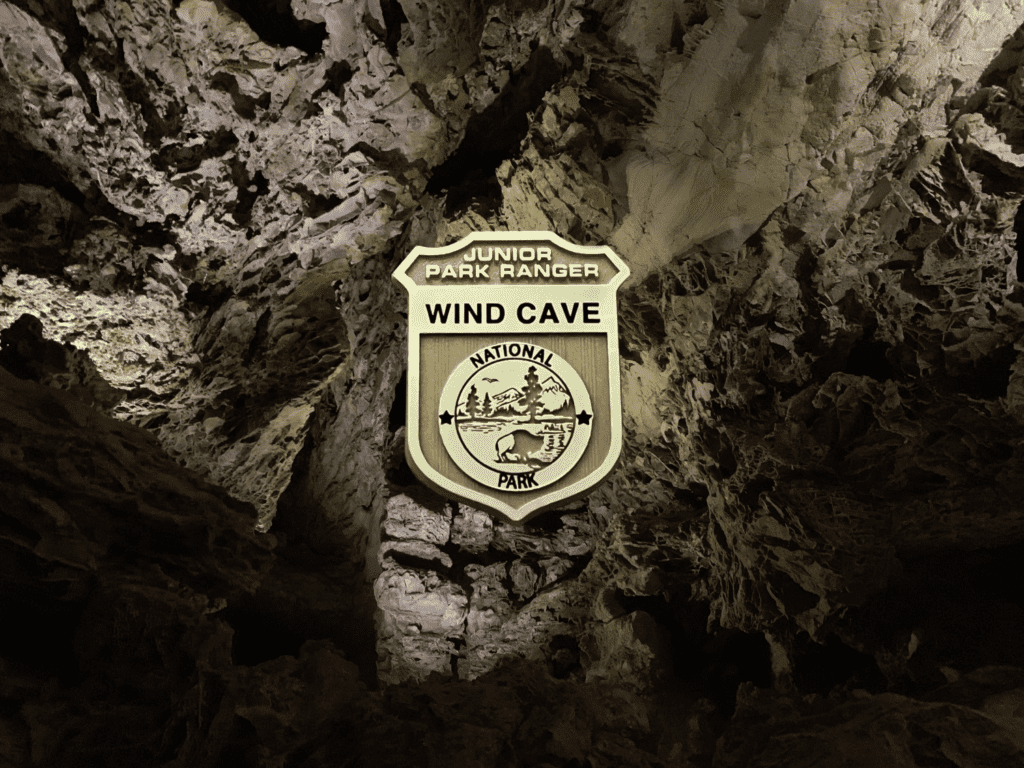
“Lost in the Black Hills, Don’t Find Me” is a bumper sticker we have on the van and there is a reason for that. You can fall in love with the Black Hills but totally miss one of the most mysterious, and coolest (literally cooler than the summer heat above) places: Wind Cave National Park, South Dakota.
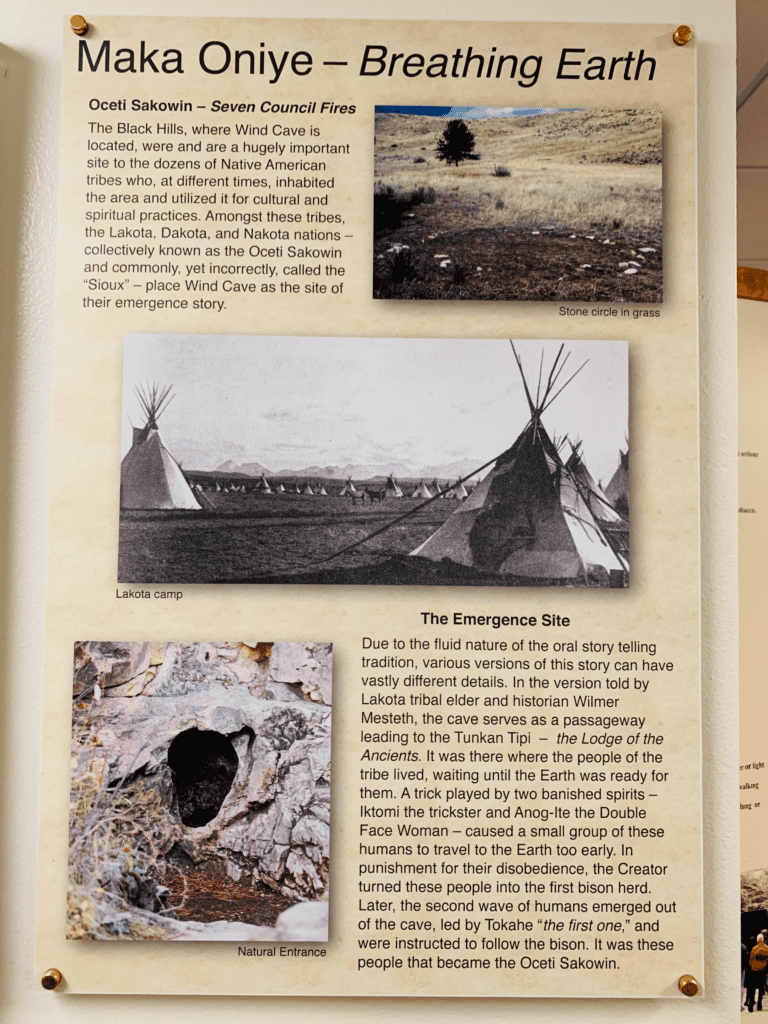
At the Wind Cave National Park visitor center, we paused to take in the Lakota Emergence (creation) story. We learned that Wind Cave’s name in modern Lakota, is Maka Oniye or “breathing earth.” Maka Oniye, Wind Cave, is one of the longest caves in the word, with over 150 miles of explored passageways. Where do they go? Is it endless? Talk about myth and mystery! The Black Hills is sacred land to the Lakotas, and being inside Wind Cave will give you the chills, both figuratively and literally. It is easy to believe that the Black Hill’s sacred rocks will always retain their sacred despite the march of history.
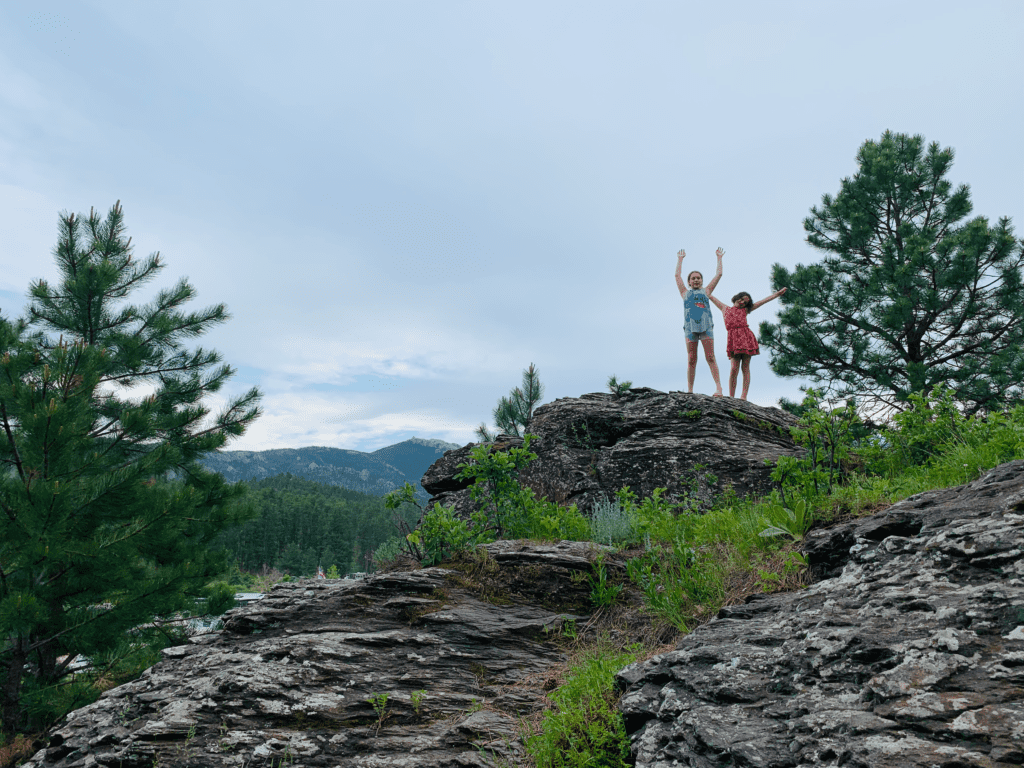
The Black Hills was a restful stop on the long trek out to the Upper Midwest. For kids, you can’t beat the Black Hills KOA. Horses, swimming, bouncy fun, even go cart rentals!
Sacred Rocks and the Crazy Horse Memorial
Even though it is not a National Park, exploring the Black Hills would not be complete without honoring Crazy Horse. Crazy Horse is “Tashunka Witco” in Oglala Lakota. We had many times read the legend of Crazy Horse’s Vision, so it was neat to see the monument in person. In Crazy Horse’s Vision, it tells a story of how his name fit his “vision of a horse dancing through a storm.” When he was named by his people, it was said “his name would stand for the best of all the Lakotas, one who always defended his people.”
There is contention that the Crazy Horse Memorial should not have been built. After all, the Lakota’s sacred mountains were already desecrated by Mount Rushmore. The counter argument is that Crazy Horse deserves to be memorized and revered as much as those on Mount Rushmore. No matter what side, we wish it would be finished since it was started. At least it truly represents the Lakota’s sacred rocks that comprise the Black Hills.
Pipestone National Monument in Minnesota
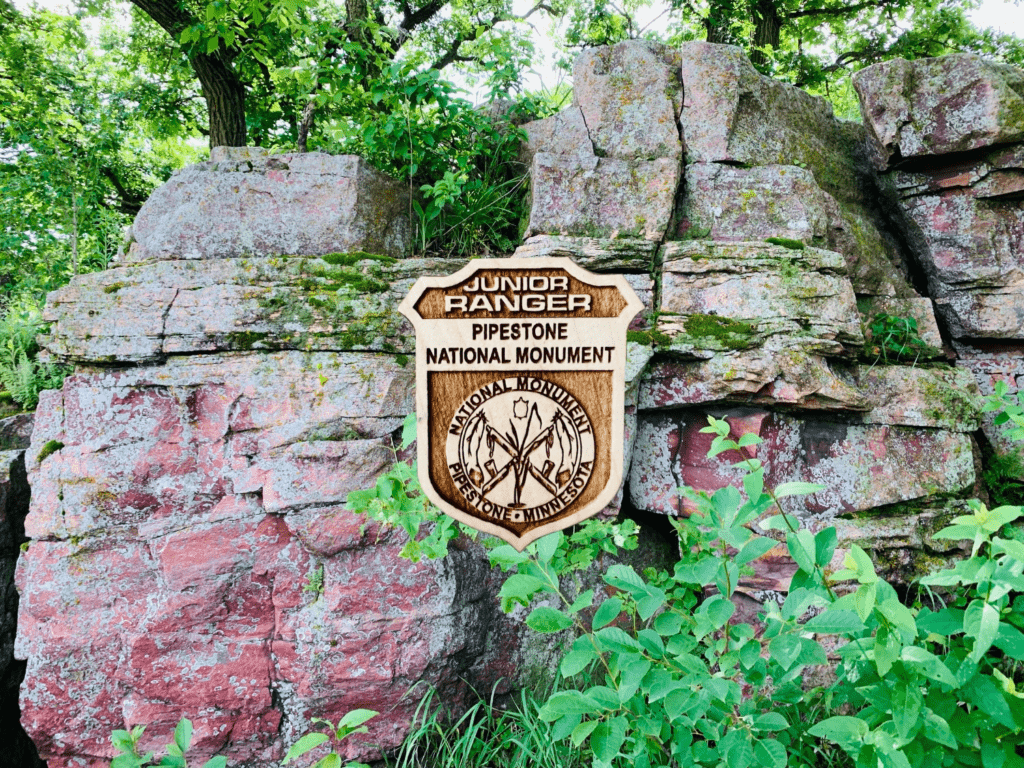
The Upper Midwest has yet different sacred rocks and legends at Pipestone National Monument. The red sacred pipestone, carved into pipes to speak to the Great Spirit. Held at a seemingly hidden sacred rock quarry, lost in tall prairie grass, in southwestern Minnesota. We discovered Pipestone because of the book The Legend of the White Buffalo Woman by Paul Goble.
My mission was to honor the First Nation Peoples’ ancestors with each National Park we visited. So I’ll discuss some Legend before moving onto the other National Parks.
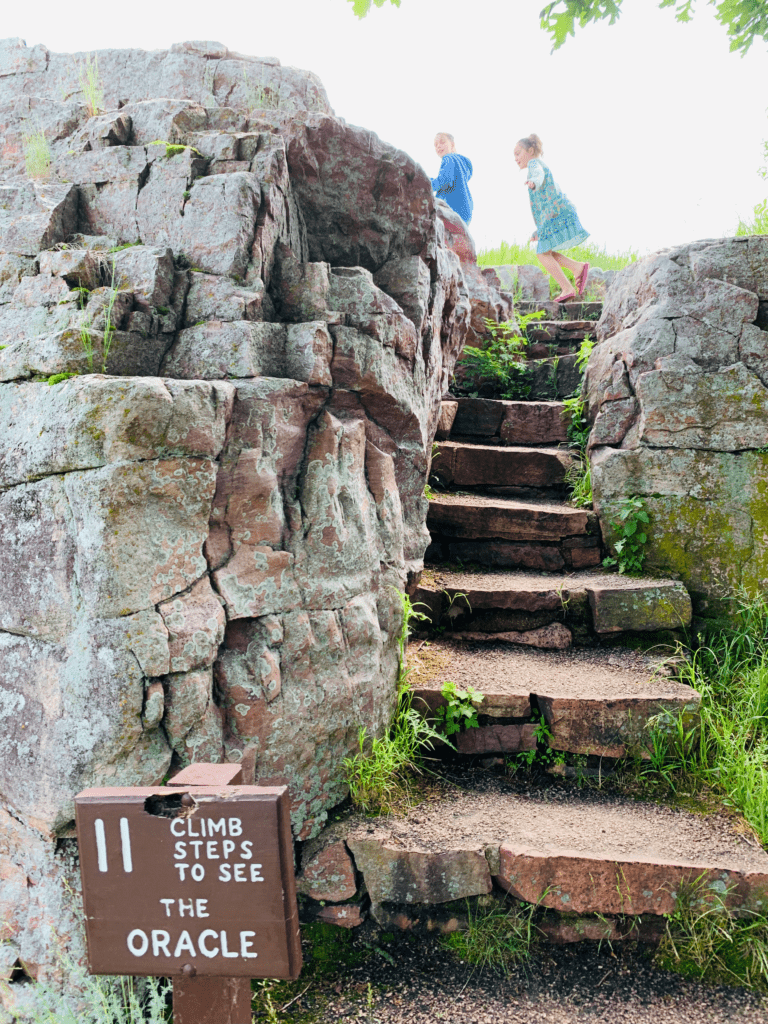
Lakota Legends of the Peace Pipe and the Great Spirit
In the book The Legend of the White Buffalo Woman, the Lakota Peoples’ White Buffalo Woman told her people the importance of the peace pipe. “When you fill the pipe, the spirits of all things will help you send your prayers to the Great Spirit.” All things on this earth have a Spirit, and they will help. Her message is the world is a helping world. Then, the White Buffalo Woman completed the pipe’s circle. She spoke “carry [the pipe] always, and the Great Spirit will help you on your pathway through life.” Her message is, we are never alone.
The peace pipe’s sacred importance permeates these lands. A profound peace pipe quote by Black Elk was memorialized at Pipestone National Monument. “When you pray with this pipe, you pray for and with everything.” – Black Elk. His message is, everything is interconnected.
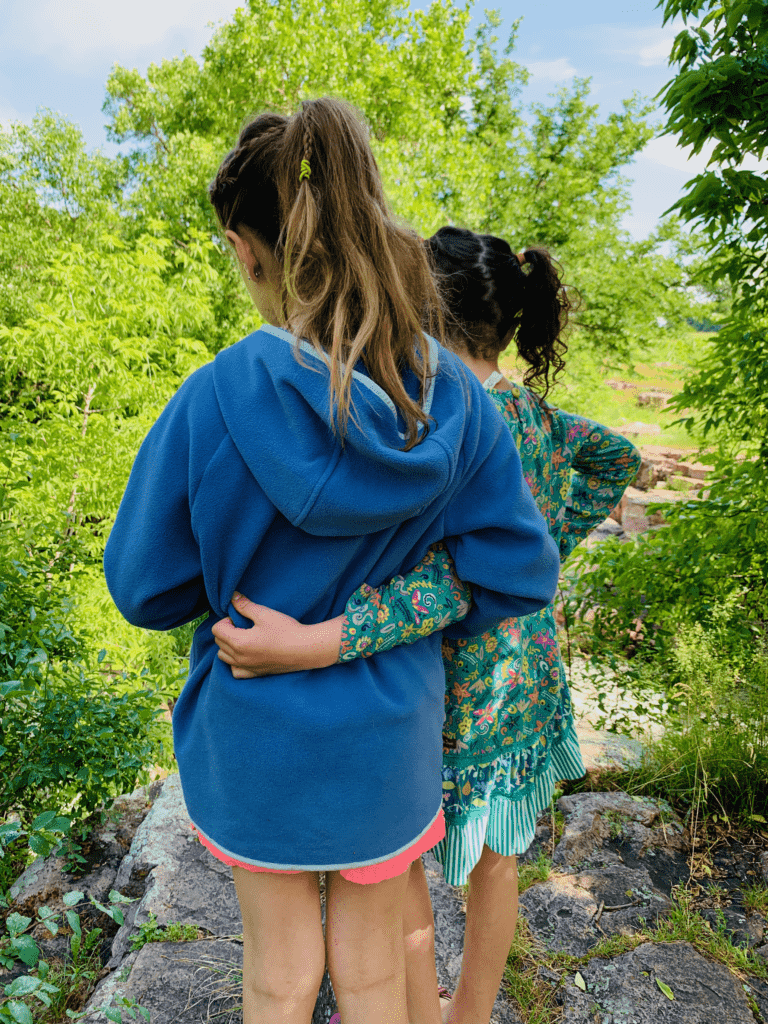
The Modern Legend of Black Elk
Black Elk’s story is another inspiring modern legend of the region. In Black Elk’s Vision: A Lakota Story by S.D. Nelson, Black Elk was called into the spirit world by the Powers of the World. The Powers of the World took form as the Six Grandfathers. In his vision, the Powers of the World handed Black Elk “the power to give life that is granted to all,” represented by a wooden cup filled with water. Then, the Powers of the World handed Black Elk “the power to destroy that is given to all,” represented by bow and arrows. Next, he received a powerful message that “everyone must choose to walk with the water of life or the weapon of destruction.” His message is, no one is excluded from this test.
To me, just as the adorned cathedrals of Europe are the sightseer’s way to feel the power of God; the sacred places in America’s nature are the sightseer’s way to feel the power of the Great Spirit. Onto more National Parks that protect these sacred places.
The Badlands National Park in South Dakota
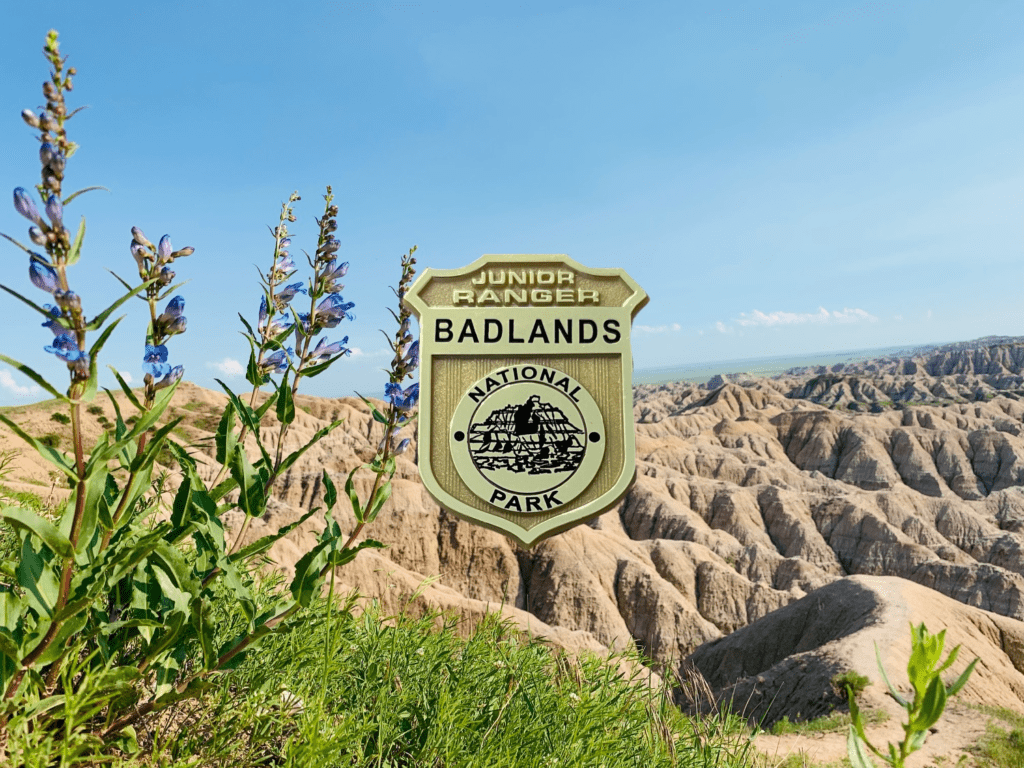
The Badlands National Park‘s sacred rocks are also a place of deep spiritual significance to the Lakota People. A place of vision quests and prayers. Literally named “bad lands” (mako sica) by the Lakotas, it is rugged and barren, with climate extremes. It seems impossible that the inhospitable landscape was once an ancient inland sea, but it was. I have learned that if you are going in the summer, you have to bring lots of water. (I don’t do heat well, so the Badlands is not my favorite summer stop).
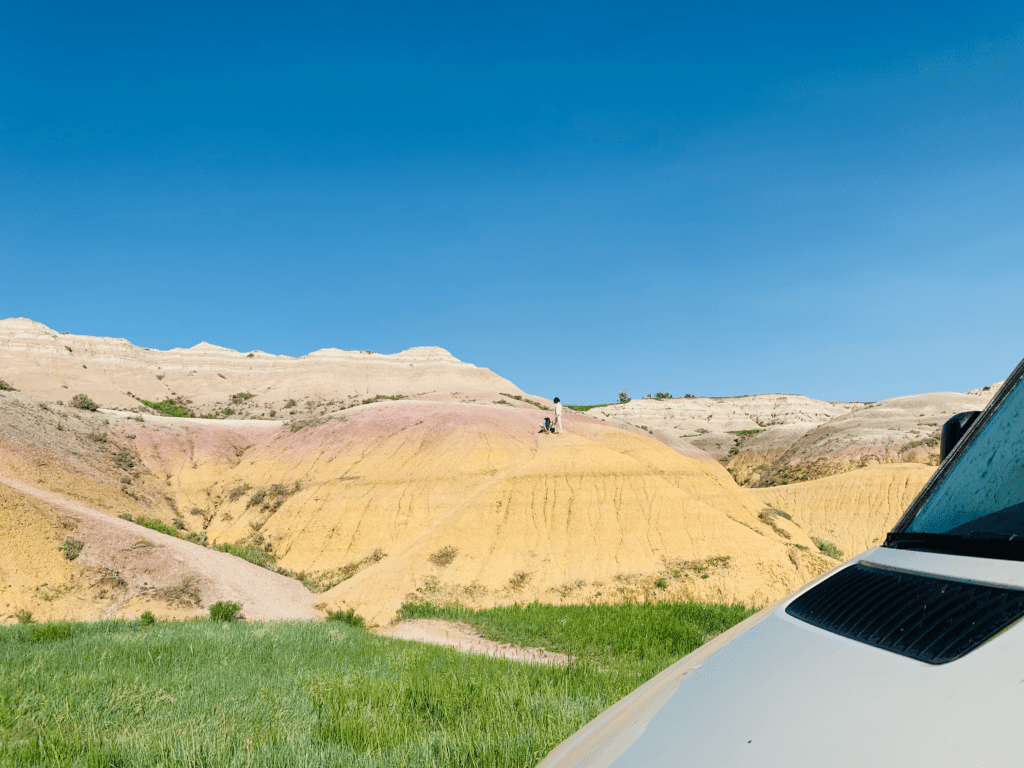
Badlands National Park has much spiritual history but also epic evolutionary history. The Badland’s geologic deposits “contain one of the world’s richest fossil beds.” There you go, a big reason alone to bring the kids to this colorful badland.
Devils Tower National Monument in Wyoming
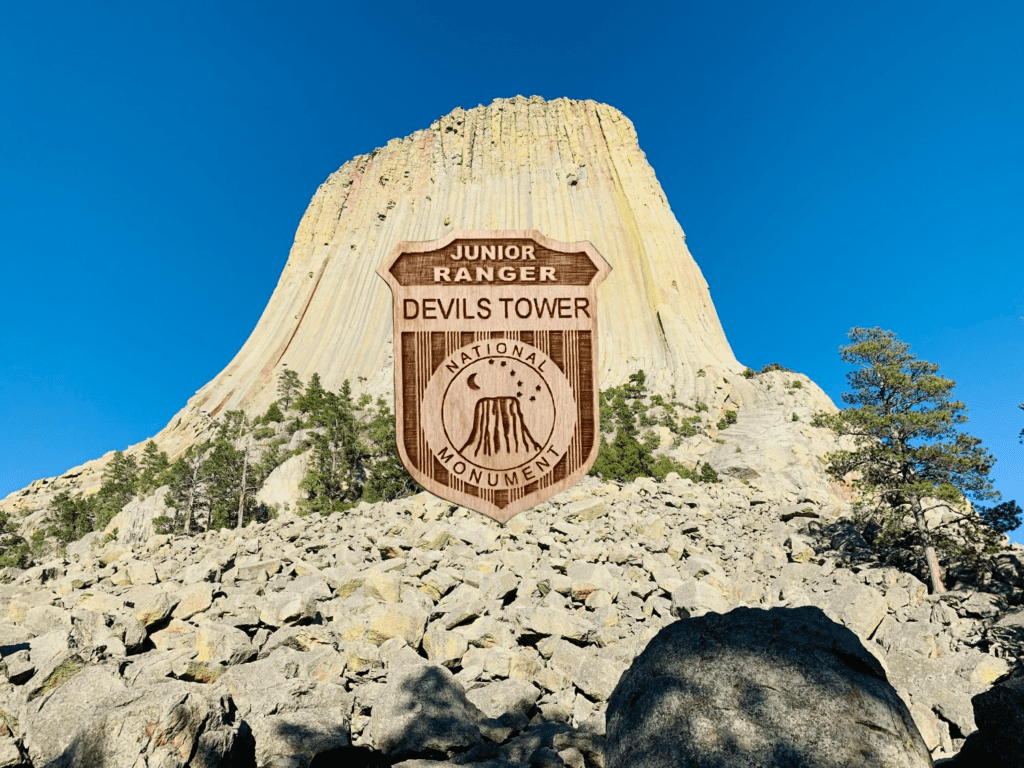
Devils Tower National Monument is another sacred rock formation filled with legend, from the region’s 20 First Nation Peoples. Read more about the First Stories here, where the stunning formation is named Mato Tipila, “Bear Lodge” by the Lakota. It is where the Great Spirit grew the tower to help save girls from a clawing bear. You can buy a great pamphlet in the visitor’s center to read to the kids at night. We love circumambulating the tower and seeing all the colorful prayer flags reverently adorning the trees.
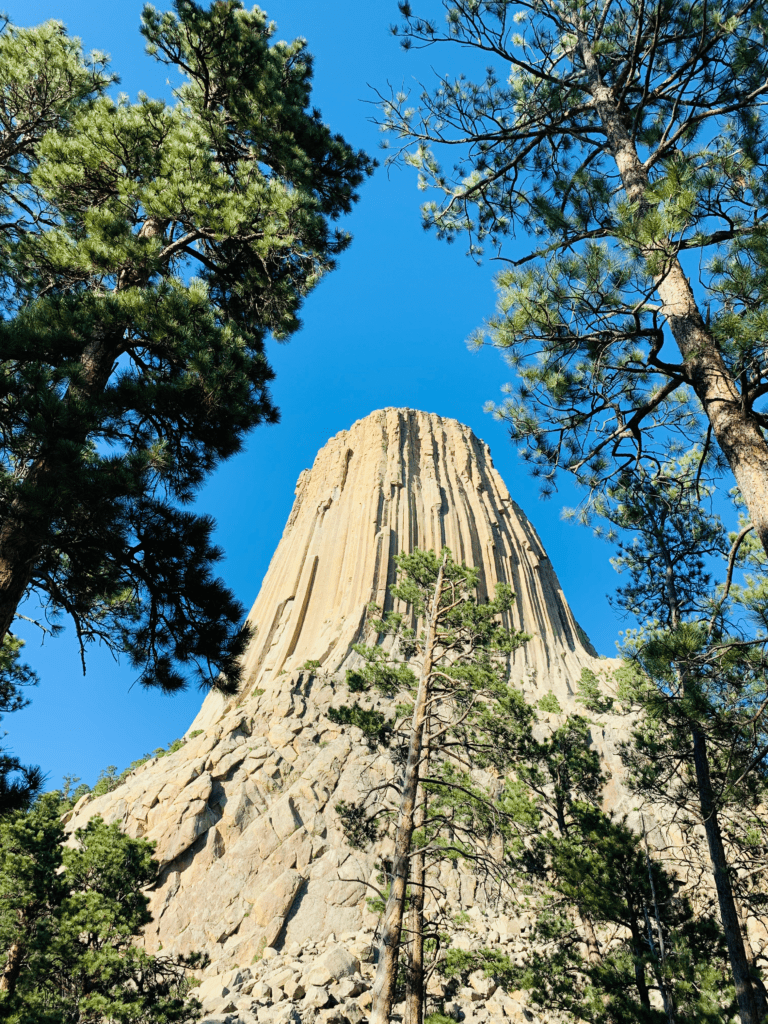
A rare igneous rock formation, Devil’s Tower (Mato Tipila) described by the National Park Service is a “geological oddity of epic proportions.” It is definitely worth a stay, and a camp out at the local Devils Tower KOA which will be sure to play Close Encounters of the Third Kind each night at dark on an outdoor movie screen. Sacred ceremonies, campers, rock climbers, hikers, prairie dogs popping up everywhere, this is truly a tower looming over the surrounding plains in a wondrous spectacle.
Theodore Roosevelt National Park in North Dakota
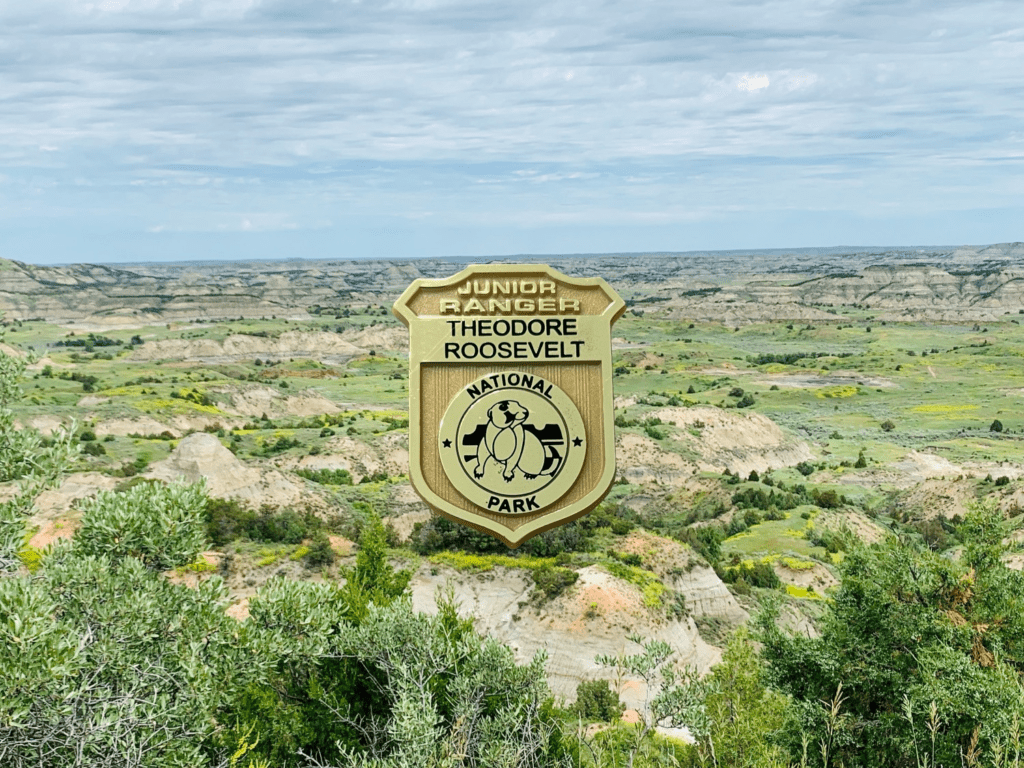
Who would have guessed that Theodore Roosevelt was not only a naturalist and a great president, but was also a rancher out on the great Midwestern prairie? We learned all this and more at Theodore Roosevelt National Park. It was the day that the girls’ realized that sometimes we think we know something is a fact but it’s a widely held mistake. Buffalo are not buffalo. Not sure how the mass incorrect identification started, but North America doesn’t have an animal called buffalo; Asia does. These great beasts are bison, or, to the Lakota, tatanka. One could only imagine seeing them stomping over the flower strewn vast sea of the Great Plains.
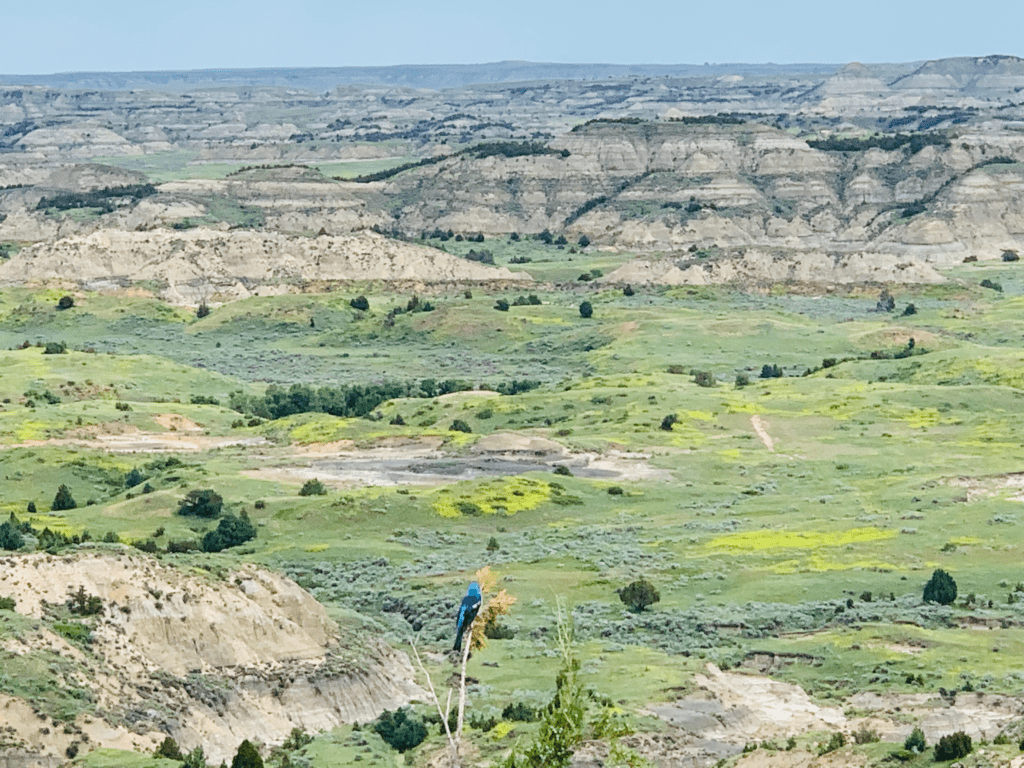
We only managed a super quick stop at Theodore Roosevelt National Park, but it was a memorable one. It was a “we’ll be back again” sort of exit, as this region, rich with the sacred, it hard to not want to visit again and again. What hidden legends are in store for next time?
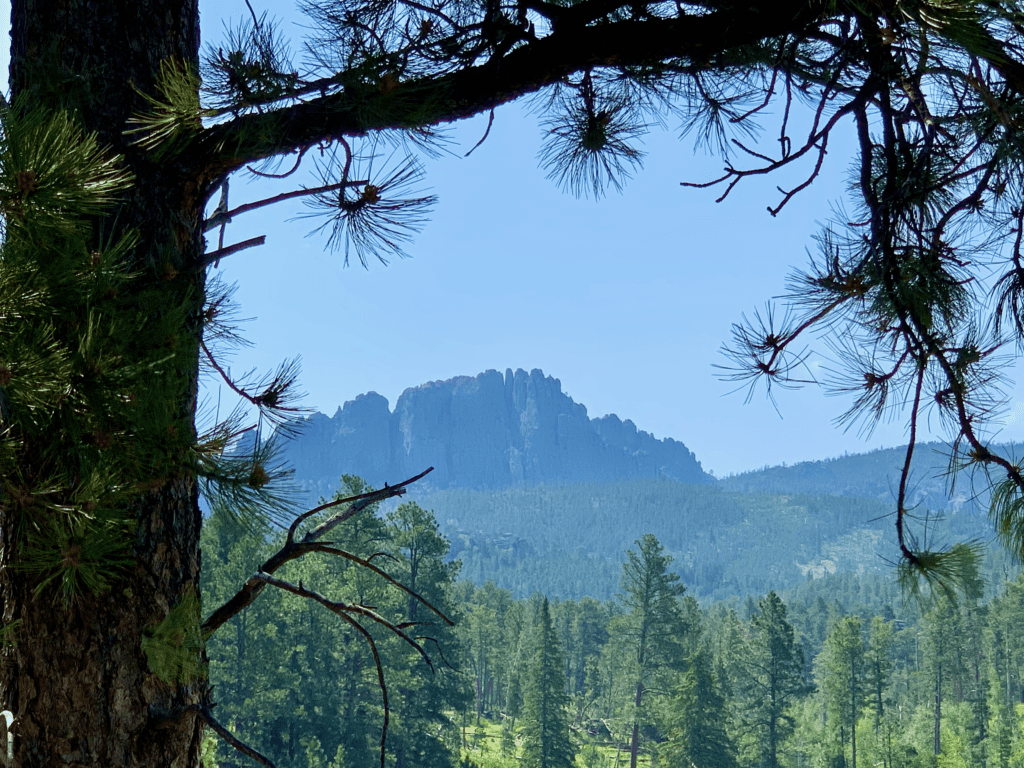
Subscribe To Our Newsletter.
Join our mailing list to receive the latest news and updates from our team.

